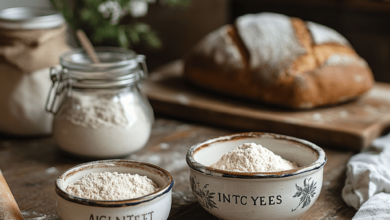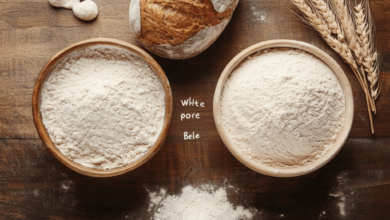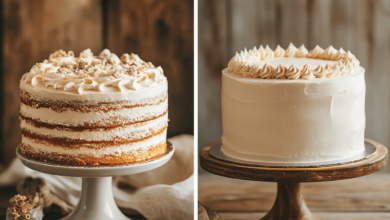Which One Is Better: Brown Sugar or White Sugar for Baking?
Introduction
“Which one is better for baking: brown sugar or white sugar?”
Sugar is a fundamental ingredient in baking, but not all sugars are created equal. Brown sugar and white sugar may seem similar, but they have distinct differences that can affect the flavor, texture, and appearance of your baked goods. In this guide, we’ll explore the differences between the two and help you decide which one is better for your recipe.
1. What Is Brown Sugar?
Brown sugar is white sugar with added molasses, which gives it a rich flavor and a moist texture.
- Key Characteristics:
- Contains molasses, giving it a caramel-like taste.
- Higher moisture content makes baked goods softer and chewier.
- Available in light and dark varieties, depending on the amount of molasses.
Best Uses: Cookies, muffins, and recipes where a moist, rich flavor is desired.
2. What Is White Sugar?
White sugar, also known as granulated sugar, is a refined sweetener commonly used in baking.
- Key Characteristics:
- Neutral flavor and dry texture.
- Creates a crisp texture and lighter color in baked goods.
- Dissolves easily, making it versatile for all types of recipes.
Best Uses: Cakes, meringues, and recipes where a light, airy texture is needed.
3. Comparing the Two Sugars
| Feature | Brown Sugar | White Sugar |
|---|---|---|
| Flavor | Rich, caramel-like | Neutral, sweet |
| Texture | Moist and soft | Dry and crisp |
| Effect on Baked Goods | Adds moisture, makes them chewy | Creates crisp, airy textures |
| Color | Darker, caramelized appearance | Lighter, golden hues |
Tip: Use brown sugar for richness and softness, and white sugar for crispness and lightness.
4. Substituting Brown Sugar for White Sugar
If you need to substitute one for the other:
- Using Brown Sugar in Place of White Sugar:
- Expect a moister, denser texture and a deeper flavor.
- Reduce liquids slightly if the recipe is very sensitive to moisture.
- Using White Sugar in Place of Brown Sugar:
- Expect a lighter texture and less caramel flavor.
- Add a small amount of molasses to mimic brown sugar’s flavor.
Tip: Adjust the recipe based on the sugar’s moisture content to maintain balance.
5. Which One Should You Use?
The choice depends on the recipe and desired outcome:
- Use brown sugar for:
- Cookies with a chewy texture.
- Muffins and quick breads with rich flavor.
- Sauces, marinades, and recipes requiring moisture.
- Use white sugar for:
- Cakes with a light, airy texture.
- Crisp cookies or meringues.
- Recipes where a neutral sweetness is preferred.
Conclusion
Both brown sugar and white sugar have unique qualities that can elevate your baked goods. Brown sugar adds moisture and a rich, caramel flavor, while white sugar provides a neutral sweetness and a crisp texture. Choosing the right sugar depends on the recipe and the result you want to achieve.
For more baking tips and comparisons, visit our Kuestion.com.




